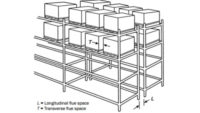Eye on Safety: Electrical safety programs
What you need to know about the most dangerous hazards.

The purpose of an electrical safety policy is to provide a safe and healthy work environment by protecting employees from injury or death caused by uncontrolled electrical hazards. It establishes requirements, best practices and procedures to train employees in basic electrical hazard recognition and safe work practices. The policy must clarify the differences between qualified and non-qualified employees.
Qualified employees are defined as any workers trained and authorized to perform work on deenergized electrical equipment and components. These employees are responsible for wearing the appropriate PPE when working with or around electrical equipment, reporting electrical safety hazards, following the safe work practices outlined in policy, visually inspecting electrical equipment, tools and cords before each use and completing all required training. In short, a qualified person is one who has received training, and has demonstrated skills and knowledge in the safe operation of electrical equipment and the hazards involved.
OSHA allows only qualified persons to work on or around energized circuits or equipment. For the purpose an electrical safety policy, a qualified person is one who performs maintenance on deenergized, locked and tagged out equipment or works with electrical tools as part of their job. An unqualified person is one who has little or no training in electrical work. Unqualified workers may not perform work on or be exposed to energized parts.
Qualified employees will use lockout/tagout procedures on all faulty electrical equipment and before any maintenance or repair work is completed. Lockout/tagout procedures are usually outlined in a separate policy but can be incorporated into the electrical safety policy. If the faulty equipment cannot be deenergized because it would introduce an additional or increased hazard, is infeasible due to the design or its operational limitations (i.e. emergency alarm systems), it is recommended that only a certified electrical contractor perform the work.
There are additional regulations that must be followed when certified electrical contractors perform work on live electrical equipment. These regulations take into consideration the potential for arc flash and other safety hazards that exist when working on live electrical parts. These safety precautions are typically outside the scope of an electrical safety program, but must be adhered to by the contractor performing the work. If your qualified employees perform work on live electrical components, these provisions must be included in your policy. Guidance will also be required if work involves high-voltage equipment as there are additional precautionary measures, training and PPE requirements that will apply.
Training is also a critical component of an electrical safety program. Qualified workers must be trained on the hazards associated with electrical equipment, procedures for reporting damaged and faulty equipment, electrical safety practices and procedures (lockout/tagout) for doing deenergized work, and safe work practices to be followed when working around or with electrical tools/equipment. They must also know how to distinguish exposed live parts from other parts of electrical equipment, how to properly inspect equipment and what PPE is required. An unqualified worker only needs to be familiar with electrical-related hazards and how to report an uncontrolled hazard.
Employees working in areas where electrical hazards are present must be provided with and use PPE that is designed for the specific part of the body to be protected and for the work being performed. PPE must be inspected prior to each day’s use and immediately following any incident. Non-conductive head protection will be worn if there is danger of electrical burns or shock from contact with electricity. If a qualified employee works on electrical equipment or wiring, they are prohibited from wearing conductive articles of clothing or jewelry and must use non-melting clothing (such as cotton), electrical-rated boots and non-conductive gloves.
Additional information, including management responsibilities, best practices and policy considerations are further outlined in a Toolbox Talk that is available for review on the ASA website at www.asa.net/Safety-Resources. A documented annual assessment of electrical hazards is also a required policy element. Information on assessments, along with what should be included in the documentation, is available at www.osha.gov.
Note: If you are a safety/environmental health professional and your company is a member of ASA, we would like to hear from you. ASA maintains a database of member company safety/environmental health professionals and we use the mailing list to send safety specific information to those having an interest. To get your name on the list please contact Jim Kendzel, vice president advocacy at
jkendzel@asa.net. In addition, we are looking for ASA member safety/environmental health professionals to serve on the ASA Safety Committee.
Looking for a reprint of this article?
From high-res PDFs to custom plaques, order your copy today!





